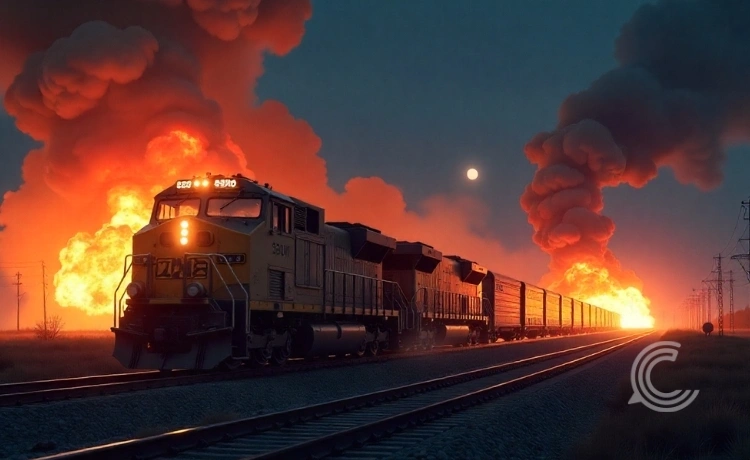Deadly Russian Strikes Target Ukraine’s Energy and Rail Infrastructure

Key Points
- Russia has recently escalated aerial attacks on Ukraine’s energy grid and railway infrastructure.
- The strikes mirror previous campaigns aimed at disrupting power and heating supplies ahead of winter.
- Ukrainian President Volodymyr Zelenskyy views the attacks as a psychological effort to sow “chaos.”
- Ukraine’s retaliatory strikes on Russian energy infrastructure are reported to be causing significant domestic fuel shortages in Russia.
The conflict in Ukraine has seen a significant escalation in aerial attacks, with Russia targeting the country’s energy grid and railway infrastructure in recent overnight strikes.
The strikes mirrors similar campaigns carried out during the winters of 2022, 2023, and 2024, which previously left millions of Ukrainian citizens without energy or heating for extended periods
Zelenskyy’s Accusation of ‘Chaos’
As reported by Agence France-Presse (AFP), President Volodymyr Zelenskyy accused Moscow of a deliberate strategy to destabilise the country. “Russia’s task is to create chaos and apply psychological pressure on the population through strikes on energy facilities and railways,” Zelenskyy told journalists in Kyiv.
These sustained attacks, according to the president, have already placed Ukraine’s gas infrastructure under “heavy pressure,” raising the possibility of a need to ramp up energy imports.
Impact on Southern Ukraine
The human and material costs of the latest strikes were immediately evident. A drone attack in Ukraine’s southern region of Odesa reportedly injured five people and inflicted damage on both port and energy facilities, as stated by Governor Oleh Kiper on Telegram. The attack resulted in a power outage affecting 30,000 consumers and ignited fires in port containers holding vegetable oil and wood pellets.
The railway network remains a vital logistical artery for Ukraine, supporting both military resupply and the movement of commercial goods and civilians. The intensification of strikes on railway infrastructure, including depots, substations, and rolling stock, has been interpreted as an attempt to paralyze Ukrainian logistics.
Reciprocal Strikes on Russian Territory
The strikes on Ukrainian facilities come amid a reciprocal campaign by Kyiv, which has also escalated its drone and missile strikes deep into Russian territory.
President Zelenskyy stated that Ukraine’s attacks were showing “results,” claiming that Russia has “lost up to 20% of their gasoline supply, directly as a result of our strikes,” and has allegedly increased imports from China and Belarus.
You may also like to read: Israel and Hamas Sign Off First Stage of Gaza Peace Plan, Trump Confirms
Attacks on Russian Energy Sites
President Zelenskyy stated that this campaign was yielding “results,” specifically pointing to an impact on Russia’s fuel supplies. “We believe that they’ve lost up to 20% of their gasoline supply—directly as a result of our strikes,” Zelenskyy said, adding there was evidence that Russia had increased fuel imports from China and Belarus to mitigate the shortages.
These reciprocal strikes have affected key Russian facilities. For example, Ukraine recently hit a power station in the Russian border region of Belgorod, leading to power outages.
Additionally, Governor Andrei Bocharov confirmed that drone attacks on Thursday triggered fires at fuel and energy facilities in Russia’s Volgograd region.
This cycle of strikes and counter-strikes on critical civilian infrastructure points to an intensification of the economic war of attrition between the two nations.
Humanitarian and Economic Ramifications
The continued focus on critical infrastructure highlights the humanitarian and economic challenges facing both nations.
For Ukraine, the approaching winter adds urgency to the need for repairs and improved air defenses to protect its power and heating systems. For Russia, the deep strikes into its territory demonstrate an expanding operational range for Ukraine’s defense forces and the vulnerability of its own domestic energy supply chain. The civilian toll and widespread disruption of essential services underscore the broadening impact of the conflict on non-combatants.



